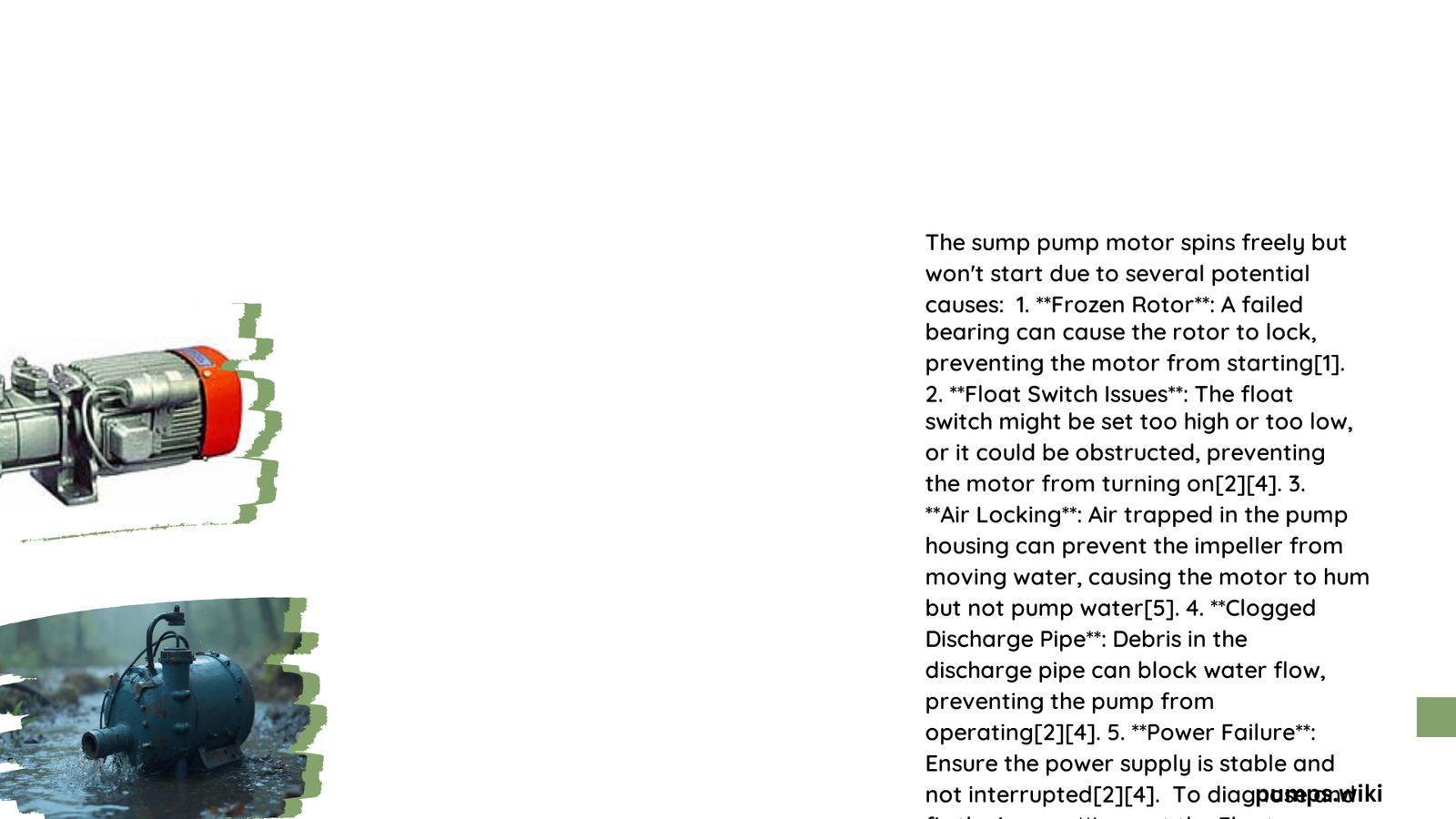A sump pump motor that spins freely but won’t start can be frustrating and potentially lead to basement flooding. This issue often stems from electrical problems, mechanical failures, or air locking. Understanding the causes and solutions can help homeowners troubleshoot and resolve the problem efficiently, ensuring their sump pump functions properly when needed.
What Are the Common Causes of a Sump Pump Motor Spinning Freely But Not Starting?
Several factors can cause a sump pump motor to spin freely without starting:
- Faulty capacitor
- Power supply issues
- Internal motor defects
- Air locking
Let’s explore each of these causes in detail:
1. Faulty Capacitor
The start capacitor provides the initial boost of power needed to start the motor. If it’s defective, the motor may spin but fail to engage fully.
2. Power Supply Issues
Problems with the power source, such as a tripped circuit breaker, loose wiring, or a faulty outlet, can prevent the motor from starting despite spinning freely.
3. Internal Motor Defects
Mechanical failures or burnout within the motor can cause it to spin without engaging properly.
4. Air Locking
Air trapped in the pump housing can prevent water from being pumped, even if the motor spins. This is particularly common in bottom intake pumps.
How Can You Troubleshoot a Sump Pump Motor That Spins But Won’t Start?

Follow these steps to diagnose and potentially resolve the issue:
- Check the power source
- Inspect the capacitor
- Examine for air locking
- Assess the motor condition
Step 1: Check the Power Source
- Ensure the power cord is securely connected
- Test the outlet with another device
- Check the circuit breaker
Step 2: Inspect the Capacitor
- Locate the capacitor (usually near where the power cord enters the pump)
- Look for signs of damage or corrosion
- Use a multimeter to test the capacitor’s functionality
Step 3: Examine for Air Locking
- Check for a relief hole in the discharge piping
- Ensure the check valve is functioning properly
- Listen for unusual sounds when the pump tries to start
Step 4: Assess the Motor Condition
- Check for signs of overheating or burning smells
- Listen for unusual noises during operation
- Inspect for visible damage or wear
What Are the Repair Solutions for a Sump Pump Motor That Spins Freely But Won’t Start?
Depending on the cause, here are some repair solutions:
| Problem | Solution | Estimated Cost | Time Required |
|---|---|---|---|
| Faulty Capacitor | Replace the capacitor | $10 – $50 | 30 min – 1 hour |
| Power Issues | Repair or replace wiring/outlet | $50 – $200 | 1 – 2 hours |
| Air Locking | Install relief hole or check valve | $20 – $50 | 30 min – 1 hour |
| Motor Failure | Replace the entire motor | $50 – $200+ | 1 – 2 hours |
How to Replace a Faulty Capacitor
- Disconnect power to the sump pump
- Locate and remove the old capacitor
- Install the new capacitor, ensuring proper connections
- Reassemble the pump housing
- Test the pump for proper operation
How to Address Air Locking
- Drill a small relief hole in the discharge pipe
- Install a new check valve if necessary
- Ensure proper pump alignment in the sump pit
How Can You Test a Sump Pump Motor Capacitor?
To test the capacitor:
- Use a multimeter set to capacitance mode
- Disconnect the capacitor from the circuit
- Connect the multimeter leads to the capacitor terminals
- Compare the reading to the capacitor’s rated value
A significant deviation from the rated value indicates a faulty capacitor.
What Are the Quantifiable Symptoms of Sump Pump Motor Failure?
Look out for these symptoms:
- Motor spins but doesn’t pump water
- Unusual noises (grinding, squealing, hammering)
- Excessive heat from the motor
- Failure to start despite power supply
If you observe any of these symptoms, it’s crucial to address them promptly to prevent potential flooding and further damage to your sump pump system.
Remember, if you’re unsure about any aspect of sump pump repair or if the problem persists after troubleshooting, it’s best to consult a professional plumber or sump pump specialist.
